executions
gibbet
Known in antiquity, but commonly - as the death penalty - used since the Middle Ages.
A loop tightening around the neck of the condemned person caused asphyxiation (caused by stopping the flow in the carotid arteries and hypoxia of the brain) or immediate breakage of the spinal cord under the weight of the body.
In practice, many methods have been used to prevent complications - if the spinal cord was not broken during the execution. The cords were soaped and boiled to make it easier to clamp, and the convicts were weighed to choose the length of the hook properly.
The death penalty by hanging was used in Poland until 1988.
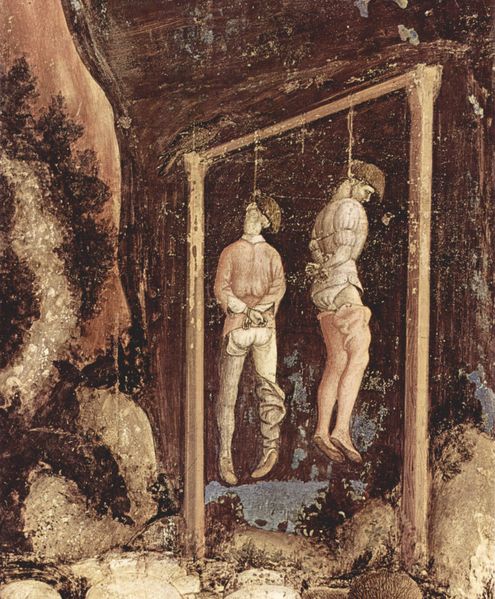
shooting
A single shot or more often a few or a dozen is designed to destroy the internal organs of the convict.
At present, people sentenced to death in China and Belarus are being shot in the back of the head.
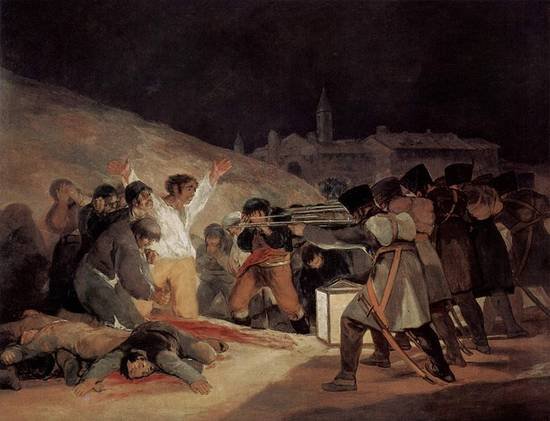
Chamfer
Cutting off the head deprives life immediately and it seems almost painless. Heads were cut down in antiquity and the Middle Ages, and later. The peak of the use of decapitation probably belongs to the time of the invention of the guillotine and its universal use in the eighteenth and nineteenth centuries.
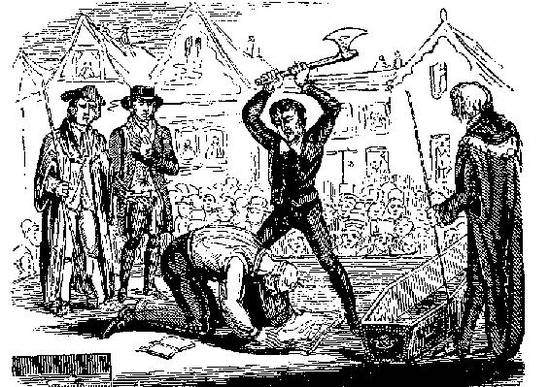
Burning at the stake
This punishment was used already in antiquity, but it became particularly popular in the Middle Ages and later - during the persecution of heretics and people accused of witchcraft.
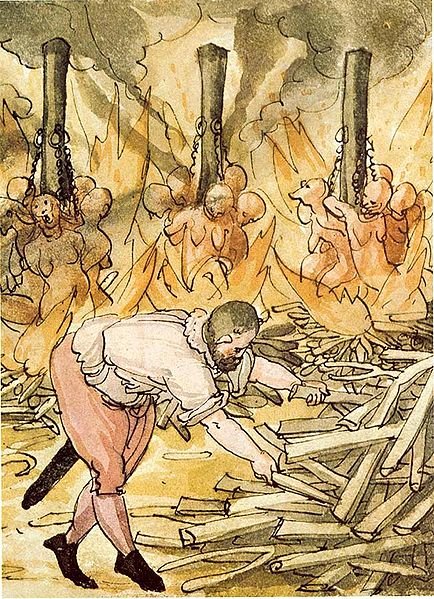
Breaking the wheel
The convict was tied to the circle stretching his limbs. Then the executioner broke the legs and hands of the convict by hitting them with a truncheon or rod. The last element of punishment was breaking the spine.
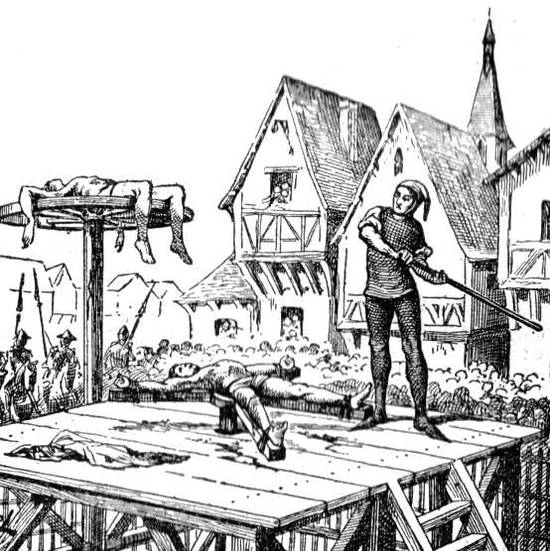
Skin tearing
Skin tearing could be a form of torture, but if you removed a large area of it, it ended in death.
Kat cut through the skin of the condemned man and torn it off - usually starting from the legs and ending on the head.

Tearing horses
Each limb of the condemned man was tied to a horse. Horses pulling legs and hands in four directions torn the body, which ended in massive bleeding that led to death.
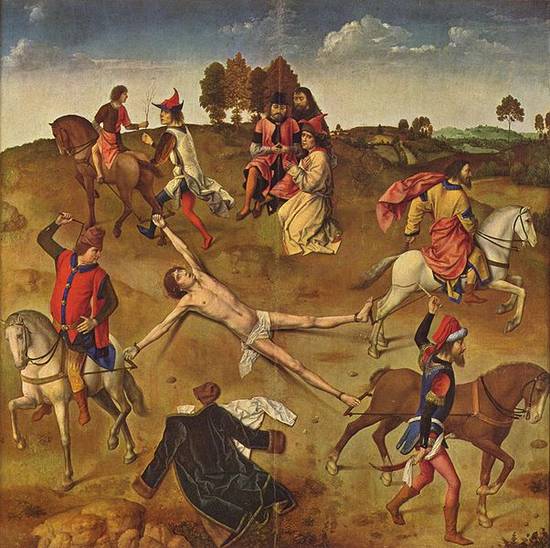
Breaking with an elephant
This is an exotic method of executing the death penalty most widespread (until the 19th century) in India. It consisted in literally crushing the body of a convicted person by specially trained elephant for such tasks.
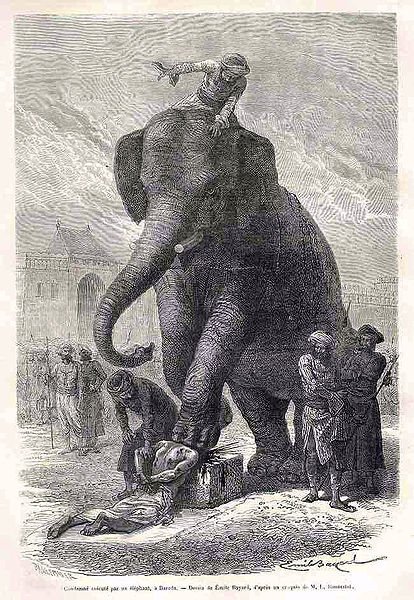
Electric chair
An electrical voltage of about 2,000 V acting on the body of the condemned person for 5 to 15 seconds causes death - brain damage and cardiac arrest. Unfortunately, in practice it happened that during the execution of a single impulse was not enough and the convicted dying much longer.
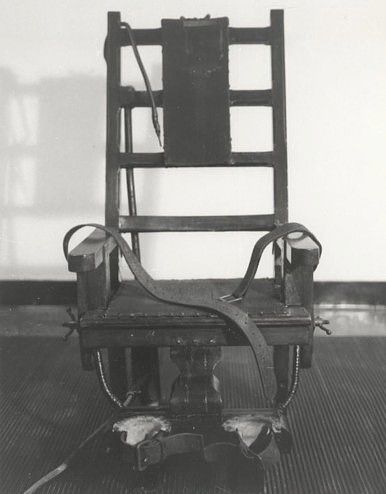
Gas chamber
It is obvious that it was associated with the use of gas to murder people by the Nazis during the Second World War. Gasification is also the method of execution currently used in several US states (if this method is chosen by the convict).
The convict attaches himself to a chair or bed in a sealed chamber. There is also a container in the chamber in which - after the introduction of hydrochloric acid and potassium or sodium cyanide - there is a chemical reaction releasing the gas - hydrogen cyanide. Inhaling him by the convict causes a blockage of cellular respiration.

Injection
In the US, the death penalty is carried out in 36 states. In 34 of them, it is made by means of an injection of substances causing death. The method was proposed in 1977 by a doctor who wanted to "civilize" the manner of punishment and replace the electric chairs used at that time.

The death penalty was still in place before the creation of legal systems in their current understanding. It was not until the twentieth century that the possibility of adjudicating death sentences was lifted.
Currently, the death penalty is mainly used by undemocratic regimes and the US, Japan, South Korea, Singapore, Taiwan, Malaysia and India.
Congratulations @tonicc! You have completed some achievement on Steemit and have been rewarded with new badge(s) :
Click on any badge to view your own Board of Honor on SteemitBoard.
To support your work, I also upvoted your post!
For more information about SteemitBoard, click here
If you no longer want to receive notifications, reply to this comment with the word
STOP